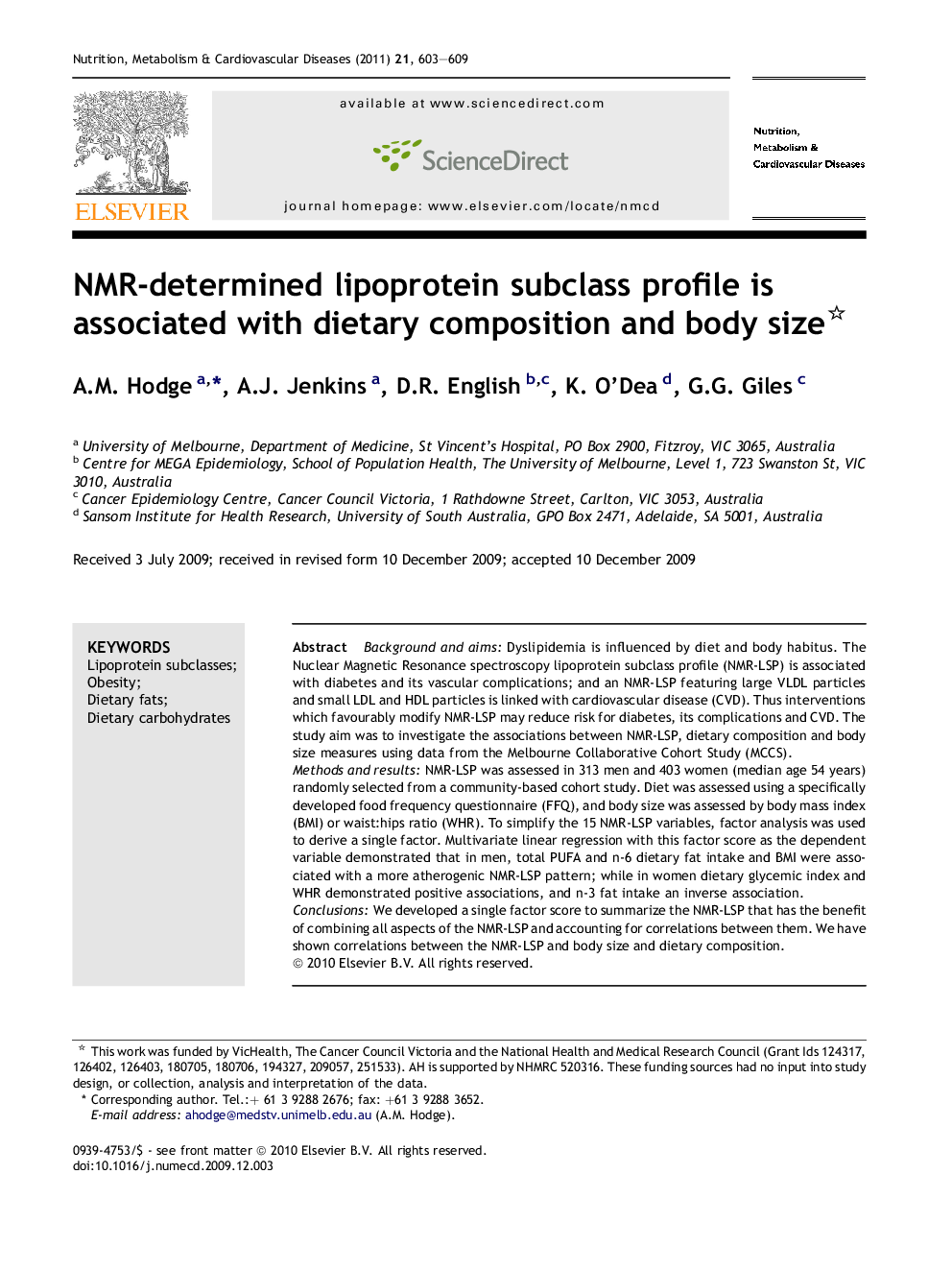| Article ID | Journal | Published Year | Pages | File Type |
|---|---|---|---|---|
| 3002356 | Nutrition, Metabolism and Cardiovascular Diseases | 2011 | 7 Pages |
Background and aimsDyslipidemia is influenced by diet and body habitus. The Nuclear Magnetic Resonance spectroscopy lipoprotein subclass profile (NMR-LSP) is associated with diabetes and its vascular complications; and an NMR-LSP featuring large VLDL particles and small LDL and HDL particles is linked with cardiovascular disease (CVD). Thus interventions which favourably modify NMR-LSP may reduce risk for diabetes, its complications and CVD. The study aim was to investigate the associations between NMR-LSP, dietary composition and body size measures using data from the Melbourne Collaborative Cohort Study (MCCS).Methods and resultsNMR-LSP was assessed in 313 men and 403 women (median age 54 years) randomly selected from a community-based cohort study. Diet was assessed using a specifically developed food frequency questionnaire (FFQ), and body size was assessed by body mass index (BMI) or waist:hips ratio (WHR). To simplify the 15 NMR-LSP variables, factor analysis was used to derive a single factor. Multivariate linear regression with this factor score as the dependent variable demonstrated that in men, total PUFA and n-6 dietary fat intake and BMI were associated with a more atherogenic NMR-LSP pattern; while in women dietary glycemic index and WHR demonstrated positive associations, and n-3 fat intake an inverse association.ConclusionsWe developed a single factor score to summarize the NMR-LSP that has the benefit of combining all aspects of the NMR-LSP and accounting for correlations between them. We have shown correlations between the NMR-LSP and body size and dietary composition.
